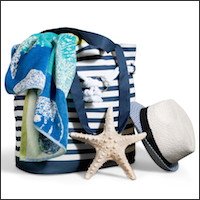Beach Vacation Tips
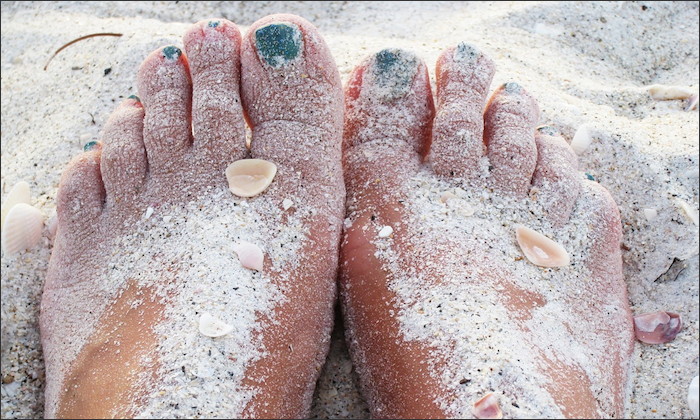 http://maxpixel.freegreatpicture.com/Feet-In-The-Sand-Warm-Sand-Beach-Holiday-Beach-1111784
http://maxpixel.freegreatpicture.com/Feet-In-The-Sand-Warm-Sand-Beach-Holiday-Beach-1111784Beach Vacation Tips for Seaside Holidays
I love beach vacations and burying my feet into the sand to find a cooler, damp clump beneath or walking in the frothy hem of surf that rides the line between the sea and the shore ... that's my idea of heaven.
We're lucky enough to live on a sailboat and have access to some of the most fabulous beaches in the world.
Over the years we've learned a thing or two and have compiled a list of beach vacation tips that we like to pass on to our visitors when they arrive. These tips are designed to keep everybody safe and happy.
Beach Glass
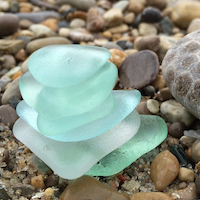
Frosted, colorful beach glass is beautiful and can be found along the seashore in almost every country.
Display it in little glass bottles along with other tiny shore-side treasures for a beautiful memento of your trip.
It also looks lovely in a shallow dish and the porous surface holds scent for a
few days if you spray or drop your favorite essential oil onto it.
If you're the creative type, beautiful jewelry, mosaics and window hangings can be made with sea glass.
FLAGS - Beach Vacation Tips
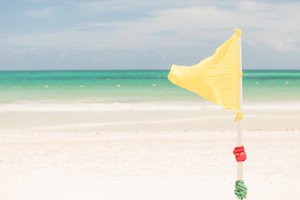
What Those Flags Are Telling You
A simple flag system communicates the condition of the waves and currents or the presence of dangerous sea life on most public swimming beaches.
Pay attention to the warnings, they're there for your safety.
If there's a lifeguard station there will be a chart posted that explains what each flag means.
Here's a run down
- Green - Calm, the waves are small and currents minimal.
- Yellow - Moderate waves and currents. Some white caps are visible.
- Red - Potentially dangerous currents, particularly for weak swimmers.
- Double Red - Danger
- Purple - Dangerous marine life
- Orange - Air or water quality. Contamination or pollution of the environment.
- Multiples - Sometimes more than one flag will be flying for example there may be a green flag to indicate calm conditions and a purple flag if dangerous marine life is present.
Watch this video to learn more about flags and what they mean.
Rip Current Savvy
A little knowledge can save your life ... and it starts with a simple rule - don't fight the current.
This type of current is a little hard to spot from the shore but there are a few tells.
Because the current is running rapidly from the shore out to sea there are usually NO waves breaking on shore where the rip exists. That results in a smoother look which sometimes gives it the appearance of being the best place to enter the water (It's NOT). At times you'll notice weeds, foam or debris being swept seaward. Also the seas are usually more than 2 feet high and waves on either side of the rip are evident.
Study this video to learn more about how to identify a rip tide.
Beach First Aid Tips
Common sense beach safety tips for a happy healthy beach vacation.
Sunburn - Common places for sunburn are, feet and wherever your hair parts (particularly if you get those braids or cornrows). Under your nose and chin can burn when water reflects the sun in these areas. Any skin that has been unexposed for months needs protection from the tropical sun.
Cool burns with cool water. Stick to water soluble (non greasy) gels or lotions if you want to apply anything to superficial burns. Pack aloe gel or Noxema to soothe burns.
Jellyfish Stings - Some stings can be soothed by applying vinegar, carry a small spray bottle of white vinegar in your beach bag if the jellyfish are out. Thin lycra suits or pantyhose protect against contact with jellyfish in the first place.
Depending on the severity of the symptoms you may offer an antihistamine (like Benadryl) to relieve itching - Tylenol or Ibuprofen for pain - or you may need to seek medical attention. If breathing problems arise, swelling of the face and airways or heart rhythm becomes irregular call an ambulance.
Carefully shaving the area after applying shaving cream or a paste made from baking soda and water, helps to prevent the activation of more toxins.
Stingrays - Shuffle your feet on the sand bottom when going into and out of the water. Stingrays whip their tails around, often stinging feet and lower legs when they're stepped on. Shuffling scares them away before you can step on them.
Treat stingray stings by repeatedly soaking the part in water as hot as the patient can stand and offering up to 600mg of acetaminophen (Tylenol).
Tanning
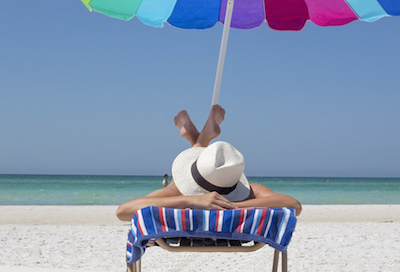
Pack sunscreen and an aloe vera lotion. Some of you will go to the tanning salon for a few sessions before going on a beach vacation and others will use the instant tanning potions. In either case, take it slow in the sun for the first few days.
The instant tan potions do NOT protect you from sunburn. Your skin may look tanned ... but it isn't.
Try the scratch test to determine if you're starting to burn. Use your fingernail to lightly scratch the skin in an area you suspect might have had too much sun. It shouldn't sting and if it does, you're already burned. Cover up or remove yourself from the sun.
More Beach Vacation Tips

Top of page - beach vacation tips

